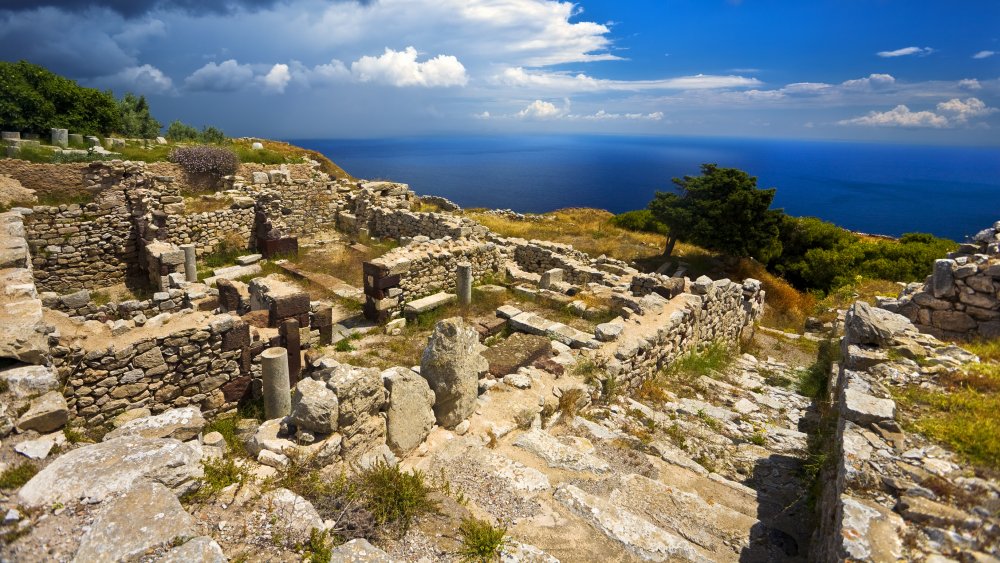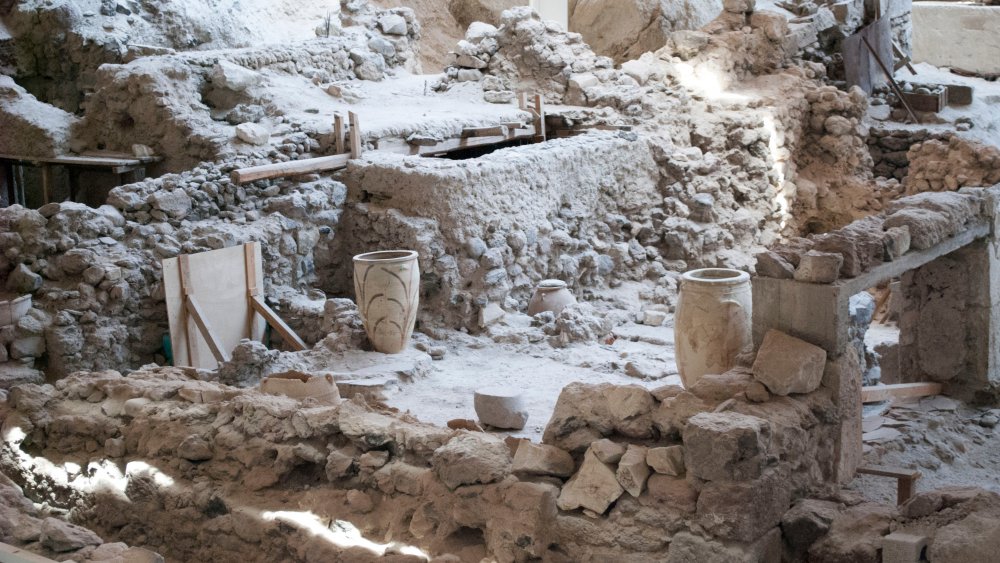The Untold Truth Of The Ancient City Of Thera
When it comes to ancient volcanic eruptions, Pompeii may have cornered the public imagination. However, Thira deserves a mention for boasting not one site preserved by volcanism, but two: Akrotiri and Thera.
Thira, also known as Santorini, is an island in the south Aegean named after Theras, a king, who, according to Pausanias, came to the island then called Calliste claiming sovereignty due to being a descendant of their first founder Cadmus. They took him in as their king and changed their name to Thera: "[Theras] hoped that the descendants of Membliarus would of their own accord give up the kingship to him. This as a matter of fact they did."
As Heritage Daily covers, however, the rest of Thera's history consisted of becoming a major trading hub, connecting mainland cities like Athens to islands like Rhodes and the eastern coast of Anatolia, known to the Greeks as Ionia. By the third century BCE, it had grown into a major naval station for Ptolemaic Egypt. Later the city became subsumed into the Roman and then Byzantine Empires, seeing a slight decline all the while due to fears of the volcano until an eruption that buried Thera in a barrage of pumice stone in 726 AD. Thera was abandoned, though, as Greece Is further illustrates, the island of Thira continued to be inhabited, though never reaching the same thriving status as it did in ancient times.
Thira's even more explosive history
For Thira, however, that volcanic eruption was nothing. The island of Thira itself makes up a large portion of a caldera, or a collapsed volcano, meaning that any habitation on the island is building your house on the lip of a volcano. It also means that close to Thera's well-preserved Greco-Roman remains lies an excellently preserved Minoan ruin called Akrotiri, named after a nearby modern village.
Sometime during the 16th century, Thira erupted. No, exploded. It exploded with twice the force of Krakatoa in 1883 that, as Live Science describes, "That fiery explosion killed upwards of 40,000 people in just a few hours, produced colossal tsunamis 40 feet tall, spewed volcanic ash across Asia, and caused a drop in global temperatures and created strangely colored sunsets for three years." The people of Akrotiri, however, might have been relatively lucky. As opposed to the people in Pompeii who were caught out by Vesuvius's eruption, a magnitude 7 earthquake ripped through the town a few days before. The "luck," as Ancient Encyclopedia explains, is that subsequently there were no casualties found at the site, suggesting residents had time to evacuate before the 15 billion tons of magma drooled over them. Today, besides being the home of two well preserved archaeological sites, Thira's biggest splash in global culture is for being a massive tourist spot, per the New York Times, and the backdrop of the 2005 movie The Sisterhood of the Traveling Pants...
Now that's perspective.

